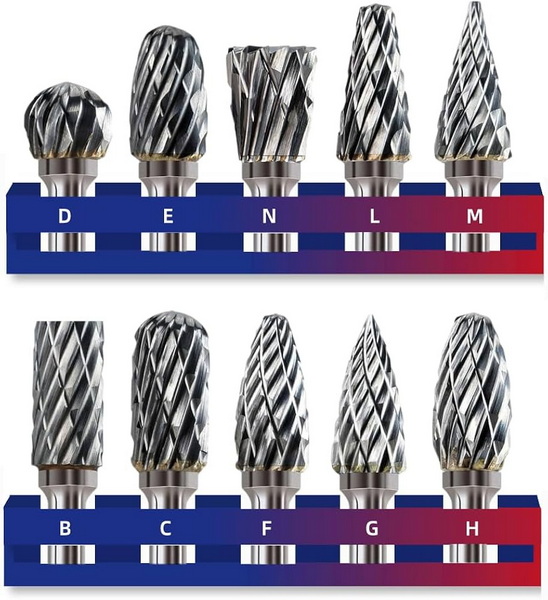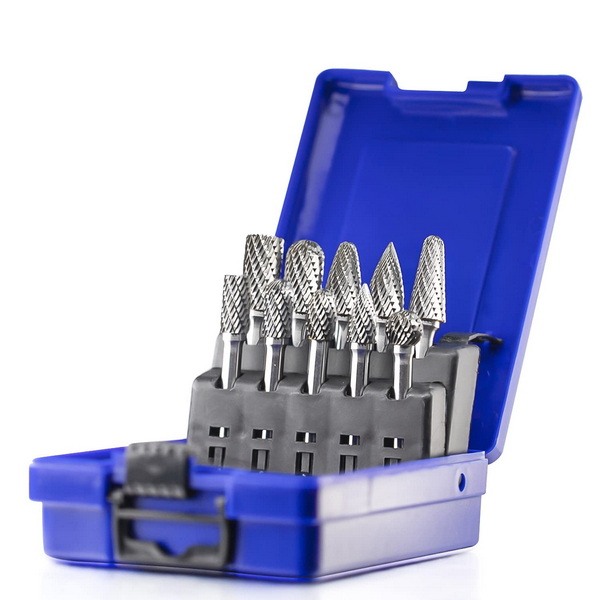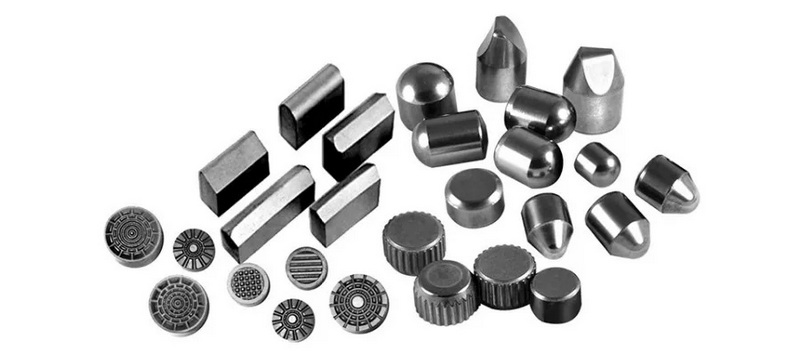Content Menu
● Introduction to Tungsten Carbide
>> Properties of Tungsten Carbide
● Introduction to Sterling Silver
>> Properties of Sterling Silver
● Comparison of Tungsten Carbide and Sterling Silver
>> Applications
● Advantages and Disadvantages
>> Advantages of Tungsten Carbide
>> Disadvantages of Tungsten Carbide
>> Advantages of Sterling Silver
>> Disadvantages of Sterling Silver
● Detailed Analysis of Applications
>> Industrial Applications of Tungsten Carbide
>> Jewelry and Decorative Items
● Environmental Impact
● Market Trends and Consumer Preferences
● Future Developments
● Conclusion
● Frequently Asked Questions
>> 1. What is the primary advantage of tungsten carbide over sterling silver?
>> 2. Why is sterling silver more commonly used in jewelry?
>> 3. Can tungsten carbide be used in electrical applications?
>> 4. How does the cost of tungsten carbide compare to sterling silver?
>> 5. Is tungsten carbide hypoallergenic?
● Citations:
When comparing tungsten carbide and sterling silver, it's essential to consider their properties, applications, and suitability for various uses. Both materials have unique advantages and disadvantages, making them more or less suitable depending on the context.

Introduction to Tungsten Carbide
Tungsten carbide is a compound of tungsten and carbon, renowned for its exceptional hardness, wear resistance, and thermal properties. It is widely used in industrial applications, such as cutting tools and machinery components, due to its ability to withstand high temperatures and abrasive environments.
Properties of Tungsten Carbide
- Hardness: Tungsten carbide ranks at 9 on the Mohs hardness scale, making it one of the hardest substances available, surpassed only by diamond.
- Wear Resistance: It offers superior wear resistance, extending the lifespan of tools and components in demanding environments.
- Thermal Properties: Tungsten carbide maintains its structural integrity at high temperatures, with a melting point of approximately 2,870°C (5,198°F).
- Corrosion Resistance: It exhibits excellent resistance to corrosion, making it suitable for use in environments where exposure to corrosive substances is common.
Introduction to Sterling Silver
Sterling silver, on the other hand, is an alloy consisting of 92.5% silver and 7.5% other metals, typically copper. It is valued for its aesthetic appeal, malleability, and conductivity, making it ideal for jewelry and decorative items.
Properties of Sterling Silver
- Aesthetic Appeal: Sterling silver has a distinctive silver-white luster, making it a preferred choice for high-end jewelry and ornaments.
- Malleability: It is softer and more malleable than many metals, allowing for intricate designs and engravings.
- Conductivity: Sterling silver offers excellent thermal and electrical conductivity, suitable for efficient heat transfer and electrical connections.
- Hypoallergenic: It is generally hypoallergenic, though the presence of other metals like nickel can cause reactions in sensitive individuals.
Comparison of Tungsten Carbide and Sterling Silver
When comparing these two materials, several key differences emerge:
| Property | Tungsten Carbide | Sterling Silver |
| Hardness | Mohs 9 | Mohs 2.5-3 |
| Wear Resistance | Excellent | Poor |
| Thermal Properties | High melting point, good thermal conductivity | Good thermal conductivity, but lower melting point |
| Corrosion Resistance | Excellent | Prone to tarnishing |
| Aesthetic Appeal | Silver-grey hue | Silver-white luster |
| Malleability | Brittle, difficult to shape | Highly malleable |
| Conductivity | Poor electrical conductivity | Excellent electrical conductivity |
Applications
- Tungsten Carbide: Ideal for industrial tools, machinery components, and high-wear jewelry due to its hardness and durability.
- Sterling Silver: Suitable for fine jewelry, decorative items, and electrical applications where conductivity is crucial.

Advantages and Disadvantages
Advantages of Tungsten Carbide
- Durability: Offers exceptional wear resistance and hardness, making it ideal for demanding applications.
- Low Maintenance: Does not tarnish or corrode, requiring minimal maintenance.
- Thermal Stability: Maintains its properties at high temperatures.
Disadvantages of Tungsten Carbide
- Brittleness: Can crack under impact, limiting its use in applications requiring flexibility.
- Cost: More expensive than many other materials due to its complex manufacturing process.
- Nickel Content: May contain nickel, which can cause allergic reactions in some individuals.
Advantages of Sterling Silver
- Aesthetic Appeal: Offers a beautiful silver-white luster, making it popular for jewelry.
- Malleability: Easy to shape and engrave, allowing for intricate designs.
- Conductivity: Excellent thermal and electrical conductivity.
Disadvantages of Sterling Silver
- Tarnishing: Prone to tarnishing, requiring regular polishing to maintain appearance.
- Softness: Less durable in high-wear applications due to its softness.
- Allergic Reactions: The presence of other metals like nickel can cause allergic reactions.
Detailed Analysis of Applications
Industrial Applications of Tungsten Carbide
Tungsten carbide is extensively used in industrial settings for cutting tools, wear parts, and other machinery components. Its hardness and wear resistance make it an ideal material for applications where durability is paramount. For instance, tungsten carbide drill bits are preferred for drilling through hard materials due to their ability to maintain sharpness and withstand high temperatures.
Jewelry and Decorative Items
Sterling silver is a staple in the jewelry industry due to its aesthetic appeal and malleability. It allows for intricate designs and engravings, making it a popular choice for fine jewelry and ornaments. However, its softness means it may not be suitable for everyday wear or high-wear applications without additional reinforcement.
Environmental Impact
Both materials have different environmental impacts. Tungsten carbide is generally more environmentally friendly in terms of durability and longevity, as it requires less frequent replacement. However, the extraction and processing of tungsten can have environmental implications, such as pollution and habitat destruction. Sterling silver, while less durable, is often recycled, reducing the need for primary silver extraction and minimizing environmental impact.
Market Trends and Consumer Preferences
Market trends show a growing demand for durable materials like tungsten carbide in industrial applications. In contrast, sterling silver remains popular in the jewelry market due to its aesthetic appeal and historical significance. Consumer preferences often lean towards materials that offer both functionality and style, making both materials relevant in their respective markets.
Future Developments
Future developments in materials science may lead to improvements in both tungsten carbide and sterling silver. For example, advancements in alloying techniques could enhance the strength and corrosion resistance of sterling silver, while new manufacturing processes might reduce the cost and environmental impact of producing tungsten carbide.
Conclusion
In conclusion, the choice between tungsten carbide and sterling silver depends on the specific requirements of the application. Tungsten carbide is superior in terms of hardness and durability, making it ideal for industrial and high-wear applications. However, sterling silver offers aesthetic appeal and conductivity, making it suitable for jewelry and decorative items.

Frequently Asked Questions
1. What is the primary advantage of tungsten carbide over sterling silver?
Tungsten carbide's primary advantage is its exceptional hardness and wear resistance, making it more durable than sterling silver in high-wear applications.
2. Why is sterling silver more commonly used in jewelry?
Sterling silver is preferred in jewelry due to its aesthetic appeal, malleability, and hypoallergenic properties, although it requires regular maintenance to prevent tarnishing.
3. Can tungsten carbide be used in electrical applications?
Tungsten carbide is not suitable for electrical applications due to its poor electrical conductivity. Sterling silver, with its excellent conductivity, is more appropriate for such uses.
4. How does the cost of tungsten carbide compare to sterling silver?
Tungsten carbide is generally more expensive than sterling silver due to its complex manufacturing process and superior durability.
5. Is tungsten carbide hypoallergenic?
Tungsten carbide is generally hypoallergenic, but it may contain nickel, which can cause allergic reactions in some individuals.
Citations:
[1] https://www.linde-amt.com/resource-library/articles/tungsten-carbide
[2] https://steelprogroup.com/stainless-steel/comparison/stainless-steel-vs-sterling-silver/
[3] https://onlytungstenrings.com/tungsten-rings-vs-silver-rings/
[4] https://www.istockphoto.com/photos/tungsten-carbide
[5] https://pixabay.com/images/search/sterling%20silver/
[6] https://shop.machinemfg.com/tungsten-vs-tungsten-carbide-key-differences/
[7] https://shop.machinemfg.com/the-pros-and-cons-of-tungsten-carbide-a-comprehensive-guide/
[8] https://wonther.com/blogs/news/8-reasons-to-start-wearing-sterling-silver-jewelry
[9] https://brite.co/blog/tungsten-vs-stainless-steel/
[10] https://www.justmensrings.com/blogs/justmensrings/the-lasting-appeal-of-tungsten-rings-durability-meets-style
[11] https://www.justmensrings.com/blogs/justmensrings/evaluating-the-durability-of-tungsten-rings-against-wear-and-tear
[12] https://www.rawninety.com/blogs/news/the-pros-and-cons-of-wearing-sterling-silver-every-day
[13] https://www.tungstenman.com/tungsten-carbide-tools-the-pros-and-cons.html
[14] https://camokix.com/blog/ring-metal-comparison-chart/
[15] http://picture.chinatungsten.com/list-18.html
[16] https://jewelrybyjohan.com/blogs/metals-and-materials/the-pros-and-cons-of-tungsten-rings
[17] https://www.stevengdesigns.com/blogs/news/the-pros-and-cons-of-tungsten-wedding-bands
[18] https://www.reddit.com/r/weddingplanning/comments/3leyjl/tungsten_vs_titanium_vs_steel_as_wedding_band/
[19] https://www.happylaulea.com/blogs/articles/say-goodbye-to-scratches-the-best-rings-for-scratch-resistance-and-durability
[20] https://etrnl.com.au/blogs/news/everything-you-need-to-know-about-tungsten-rings
[21] https://periodictable.com/Elements/074/pictures.html
[22] https://www.freepik.com/free-photos-vectors/sterling-silver
[23] https://www.freepik.com/free-photos-vectors/tungsten-carbide
[24] https://www.istockphoto.com/photos/sterling-silver
















